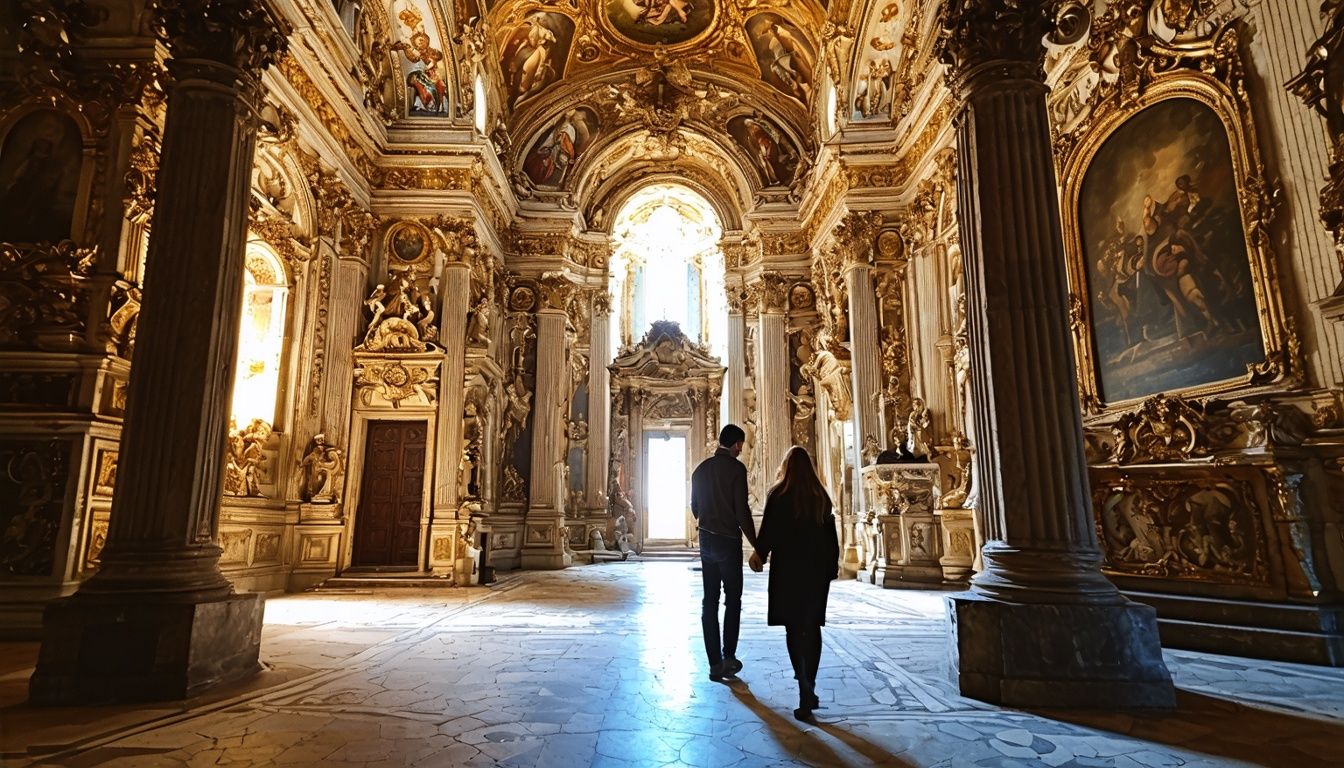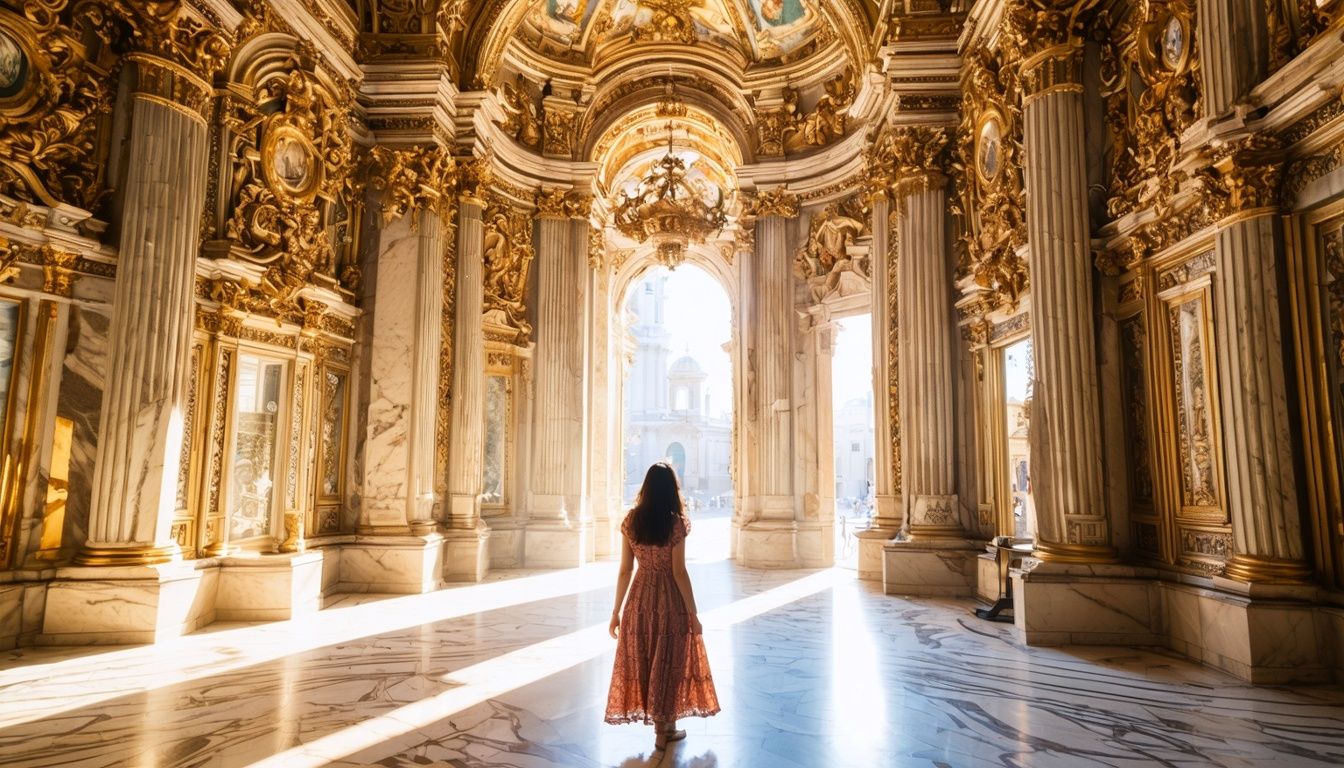
Sicilian Baroque Architecture: Discover the Beauty of Baroque in Sicily
Many people look for unique places to explore. Sicilian Baroque architecture is a hidden gem in Italy. This blog will show you the beauty and grandeur of Baroque buildings in Sicily.
Get ready to be amazed!
Key Features of Sicilian Baroque

Sicilian Baroque architecture boasts chiaroscuro and dynamic shapes alongside ornate decorations and marble inlays, creating a stunning visual impact. It’s an architectural marvel that blends light and shadow to elevate the structures with intricate details, making it a sight to behold.
Chiaroscuro and dynamic shapes
Chiaroscuro, a technique that plays with light and dark, brings Sicilian Baroque architecture to life. Picture churches and palaces in Sicily where shadows deepen the curves and embellishments, making every detail pop.
This contrast is not just about visuals—it shapes feelings, turning buildings into dramatic scenes full of emotion. Dynamic shapes twist and turn across these structures, crafting silhouettes that break free from tradition.
Curves bend more boldly; facades seem to dance under the Sicilian sun.
Sicilian Baroque architecture captures the spirit of innovation—where chiaroscuro paints emotions and dynamic shapes tell stories.
In cities like Noto or Catania, this style thrives through its boldness in design. Architects pushed boundaries after the 1693 earthquake, using chiaroscuro to enhance the theatricality inherent in Baroque style.
They carved out spaces that played with perceptions of depth and grandeur—an architectural feat that turns stone into an ode to the skies above. These elements work together seamlessly, creating an unforgettable visual symphony that defines Sicily’s landscape.
Ornate decorations and marble inlays
Sicilian Baroque architecture is renowned for its elaborate decorations and stunning marble inlays. Artists and architects from the 17th and 18th centuries embellished facades, churches, and palaces with intricate designs to showcase wealth and grandeur.
They used marble not just as a material but as a medium to narrate stories of splendor across Sicily’s landscape. These masterpieces, including cathedrals that effortlessly stand out in town squares, reflect the creative zenith of Sicilian artistry.
Craftsmen carved every inch of stone into delicate shapes, turning buildings like Santa Maria del Monte and San Giacomo Apostolo into visual feasts. Marble inlays on floors and walls played with light and shadow, giving spaces a dynamic quality rarely seen elsewhere.
This attention to detail made each church or palace unique, telling its own story through motifs inspired by local lore and history. The result is an architectural symphony that still resonates with visitors from around the globe today.
Iconic Examples of Sicilian Baroque in Cities
Iconic Sicilian Baroque examples thrive in the cities of Ragusa and Catania, boasting splendid churches and palaces. Noto and Modica further showcase the pure Baroque style with numerous baroque facades punctuating their city plan.
Ragusa and Catania
Ragusa shines as a jewel of Sicilian Baroque architecture with its stunning churches and palaces. This city, rebuilt after the devastating 1693 earthquake, presents a splendid blend of ancient beauty and architectural innovation.
Its streets are lined with buildings that tell tales of resilience and grandeur through ornate facades and intricate details.
Catania, on the east coast of Sicily, offers its own version of Baroque magnificence. The city’s reconstruction post-1693 showcases magnificent structures like the Cathedral of Saint Agatha and the Palazzo Biscari.
Each building in Catania speaks to the island’s artistic spirit, embodied in lavish decorations and dramatic silhouettes against the Mediterranean backdrop.
Sicilian Baroque in Ragusa and Catania captures the soul’s imagination with its undying charm.
Noto and Modica
Noto and Modica showcase the essence of Sicilian Baroque architecture. Nestled in south-eastern Sicily, these cities boast grandiose churches adorned with ornate decorations and marble inlays.
Noto, dubbed the “Stone Garden,” is renowned for its splendid cathedral and palaces. Its architectural wealth reflects the island’s dramatic and exuberant nature.
Meanwhile, Modica mesmerizes with its baroque-style facades featuring dynamic shapes and chiaroscuro effects. This captivating city bears testimony to the grandeur of late baroque art and architecture in Europe – a testament to wealth, creativity, and opulence during the 17th century on this beautiful island of Sicily.
The Evolution of Sicilian Baroque Post-1693 Earthquake
After the devastating 1693 earthquake, Sicilian Baroque architecture underwent a transformation in response to the destruction. New architectural styles emerged as part of the reconstruction efforts, reflecting a blend of elements from different periods and influences.
Rebuilding and transformation in architectural styles
After the devastating 1693 earthquake, Sicilian Baroque architecture flourished due to widespread rebuilding. The architectural style adapted dynamically, showcasing a fusion of late Baroque and Rococo elements while preserving its ornate grandeur.
Cities like Noto and Modica were transformed during this period, boasting splendid churches and palaces with elaborate decorations and marble inlays that characterize Sicilian Baroque.
This era marked the final flowering of Baroque art on the island, reflecting the resilience and creativity of the Sicilian people in reconstructing their urban landscapes.
The rebuilding post-1693 earthquake led to an amalgamation of architectural styles, resulting in a distinct transformation that defined Sicilian Baroque’s unique character. The evolution saw an emergence of new towns adorned with exuberant facades representing the wealth and creativity prevalent during that time.
This period not only attests to a significant chapter in artistic history but also reveals how catastrophe spurred innovation in architecture across southeastern Sicily.
Conclusion
The allure of Sicilian Baroque Architecture beckons with its sumptuous facades and grandiose churches, showcasing the wealth, creativity, and grandeur of Sicilian art. This architectural style flourished in the south-eastern area of Sicily, offering unique and suggestive treasures to explore.
It represents a fascinating chapter in the history of art and architecture while capturing the distinctiveness of the island’s dramatic and exuberant nature. The beauty of Sicilian Baroque is a result of embellishing architectural ideas from the north, creating a captivating display that showcases both creativity and artistic expression.